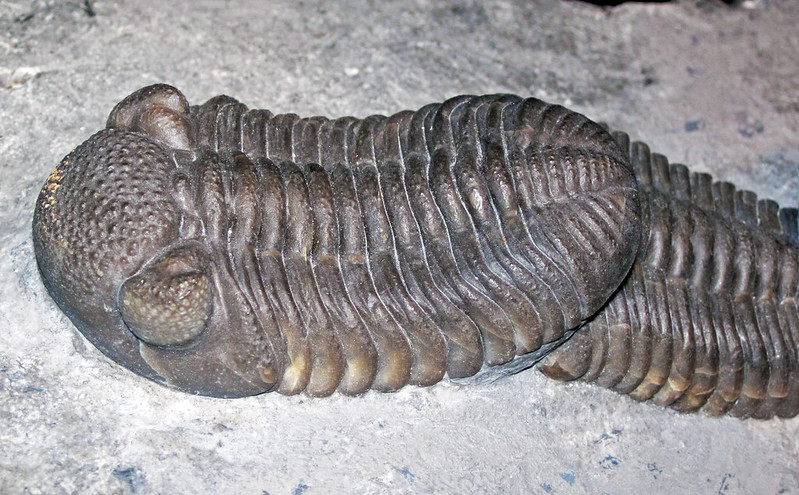Trilobites, meaning “three-lobes,” are a group of marine fossil crustaceans found in Paleozoic deposits. They are found from this layer up into the Carboniferous in Europe and the Permian in North America. They were discovered in South Wales in 1698 when the curator of a museum said of the find that “it must be the skeletons of a flat fish.” Now they are extinct marine arthropods that form the class Trilobita. Over 22,000 species of trilobites have been described, making them one of the most successful of all early animals.
Their distribution appears worldwide, and thousands of species are known. The trilobite is divided into three regions, similar to the state of Rhode Island. It is about 1,864 square miles in area, and, except for one projection, it is nearly rectangular. In the north and south, there are hills furrowed with ravines and covered with dense forests. The trilobite fossil record shows that trilobites were already highly diversified and geographically dispersed when they first appeared. Trilobites left an extensive fossil record because of their wide diversity and easily fossilized exoskeleton.
The most striking natural feature, except Pitch Lake, the asphalt lake, is Maracas Falls. Here, a river leaps over a rock wall 312 feet high. Trinidad is an English crown colony, with the seat of government at Port of Spain, a fine city with a population of 94,000. The island’s population is 484,900 (1940). The upper classes are Creoles of British, French, and Spanish blood; the rest are Negroes. English is spoken in towns, while in agricultural districts, Spanish and French dialects predominate.
Education is provided through state schools and assisted schools under several religious denominations, 256 in all. There are seven colleges. All courses in primary schools must include agriculture, and in 1921, the Imperial College of Tropical Agriculture was established to train farm superintendents, planters, and specialists.
In 1498, on his third voyage to the New World, Columbus vowed to name the first land he sighted the Trinity, and in this way, Trinidad was named. Spaniards colonized the island in the sixteenth century and occasionally hunted slaves. The French came around 1775. England acquired the island by treaty in 1802.
Natural resources made it a valuable colony; asphalt, which for many years was the main export, has been far overshadowed by petroleum. Although the supply has only begun to be tapped, in 1935, more than 11,000,000 barrels (of 35 imperial gallons each) of crude oil were produced. The exportation of large quantities of tropical products assures the economic stability of Trinidad: cacao, sugar, molasses, coffee, coconuts, copra, and grapefruit.
Trinidad is a key deposit market for the West Indies and trades with the United States, South America, and nearby British colonies. There are telephone and telegraph communications, over 120 miles of railways, and 1,200 miles of roads. In September 1940, Great Britain leased Trinidad sites to the United States for air and naval bases.
The trilobites are typically placed within the superfamily Arachnomorpha under the subphylum Schizoramia. However, there are several alternative taxonomies available. It is estimated that the largest trilobites measured over 70 centimeters in length and weighed about 4.5 kilograms.
Read More: Auricularia polytricha

Reference: Wikipedia
Originally posted 2023-10-30 06:06:31.